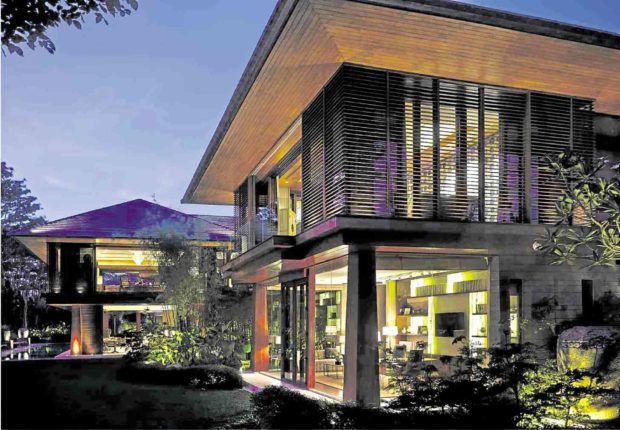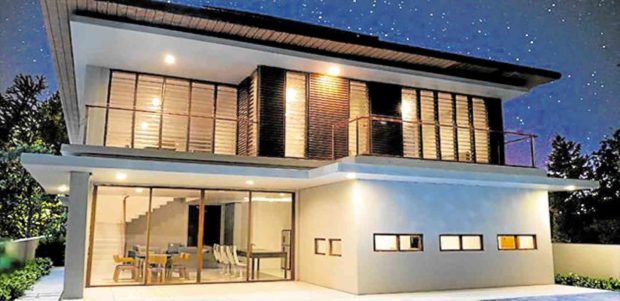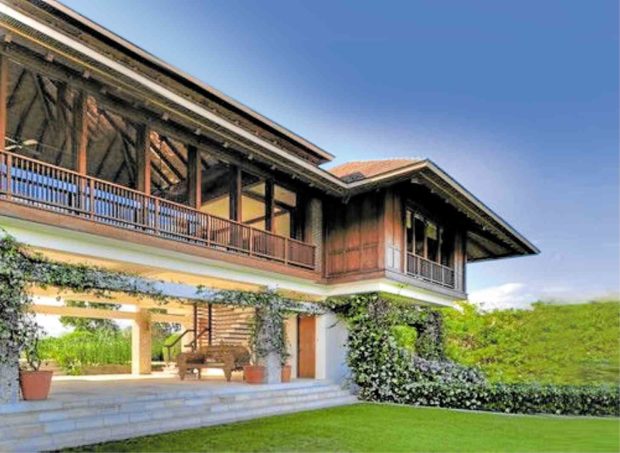The makings of a modern Filipino home
 Creating a modern home that will remain essentially Filipino has gone beyond the traditional notions of the bahay kubo and bahay na bato.
Creating a modern home that will remain essentially Filipino has gone beyond the traditional notions of the bahay kubo and bahay na bato.
Apart from the use of indigenous materials such as capiz and wood, the character that makes a modern Filipino home “speaks more about the spirit of the place which alludes to cultural, climatic or traditional sensibilities that resonate with Filipinos.” This means that rather than physical or stylistic elements, other certain characteristics would tend to reflect a Filipino character, explained Joel Luna, the founder and principal of Joel Luna Planning and Design (JLPD) and a registered architect and planner with extensive experience in masterplanning and property development.
“Among these is placeness. The modern Filipino home should feel like it belongs to its setting. If it feels like it is of its time and of its place, then there is a fit to its context. Needless to say, the best examples of modern Filipino homes can and should be found in the Philippines,” Luna added.
Tropical climate
Luna cited the country’s tropical climate to have the most significant influence on the design evolution of the Filipino home. He pointed out that the traditional Filipino homes were already climate-adapted and passively cooled.
"Materials breathed and the structure allowed air to move through the spaces. Eaves were wide to shade the indoors and windows were large. These characteristics continue to resonate with us even in the modern age of climate-controlled homes,” Luna noted.
“Transparency is also evident in many traditional Filipino designs, from the barong fabric, capiz windows, to the solihiya weave in furniture. There is a permeability and lightness in our sense of aesthetic, evolved from our response to our tropical climate. Indoors that flow to the outdoors, translucency of partitions, spaciousness, airiness and natural light are elements that appeal to Filipinos. Maaliwalas remains to be a valued, sought-after characteristic by Filipinos when designing or purchasing their home,” he further explained.
Shared spaces
Filipino homes, according to Luna, will also tend to reflect peculiarities in the use of space.
In the Filipino household, shared spaces are common—an example of which is having the children sleep in the same bedroom as their parents. This is because Filipinos’ sense of privacy is different from those of other cultures—a behavior which influences the size and flexibility of rooms. Similarly, the nuances of how Filipino families go about their daily domestic activities such as cooking (e.g. clean and dirty kitchen); doing the laundry (hand washing and air drying spaces); and praying (family altar) are reflected in the spaces found in homes even in these modern times, he added.
Festive persona
Luna further pointed out that “Filipino homes will tend to evoke our festive persona and culture.”
“We love color and pattern and eclecticism and these are reflected in our attire, our vehicles and in our home decor. Filipinos tend to maximalize and our homes tell the rich story of our lives through the photos we frame, the souvenirs from our travels we display, the varied collection of artwork and accessories that adorn our walls, the heirloom piano in the living room. The Filipino home tends to be as flavorful as the food we prepare,” he explained.
Unique way of life
Lastly, a true Filipino home is not designed.
“The structure may have been conceived initially by an architect or the space by an interior designer, but only after it has been lived in and has the vestige of the unique Filipino way of life–the scent of food cooking, the sound of children and their lola chattering, the telenovela playing on the TV—will a space really feel Filipino. And these are characteristics that have and will transcend time,” Luna concluded.

